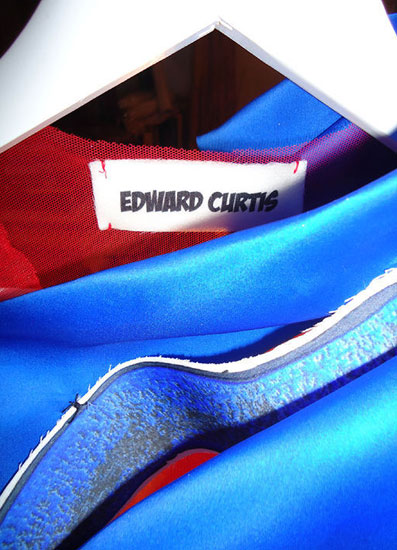Xiao Li, the London-based Chinese talent I met
last year in Florence where she was deservedly
last year in Florence where she was deservedly
awarded the ”Feel the Yarn” contest prize (previous
post here), has been in the spotlight at the Westminster
Royal College of Art graduate fashion show last
week with gorgeous puffy knits.
post here), has been in the spotlight at the Westminster
Royal College of Art graduate fashion show last
week with gorgeous puffy knits.
In Florence, Xiao made known her modern approach
to knitwear working with recycled denim yarns
to knitwear working with recycled denim yarns
introducing a technique that molds real knitted
fabrics with patterned silicone to create smooth
plastic shapes. The most voluminous shapes are
obtained by overlapping two layers of textiles
fastened by threads to keep a baggy shape.
fabrics with patterned silicone to create smooth
plastic shapes. The most voluminous shapes are
obtained by overlapping two layers of textiles
fastened by threads to keep a baggy shape.
Her graduation collection clearly represents her
blooming as a designer: Xiao Li plays with volumes
and shapes creating exaggerated silhouettes with
puffed skirts and rounded sleeves using crochet
detailing as massive necklaces. She dyed each
garment by herself in a pastel color palette that
softens the whole effect of the mesmerizing
collection. Cocooned in style.
blooming as a designer: Xiao Li plays with volumes
and shapes creating exaggerated silhouettes with
puffed skirts and rounded sleeves using crochet
detailing as massive necklaces. She dyed each
garment by herself in a pastel color palette that
softens the whole effect of the mesmerizing
collection. Cocooned in style.
 |
| > all images via Dezeen< |














































































































































